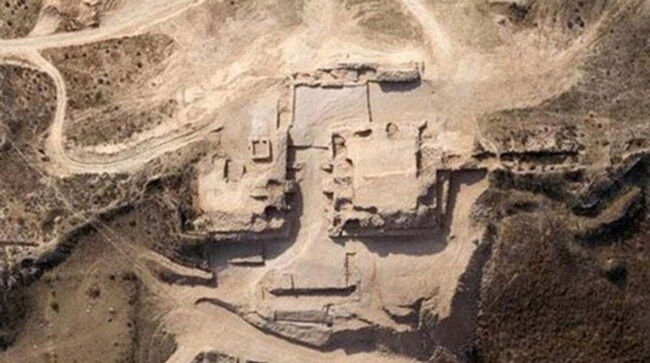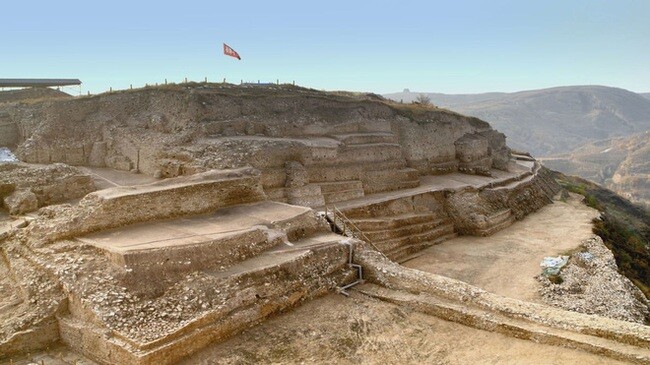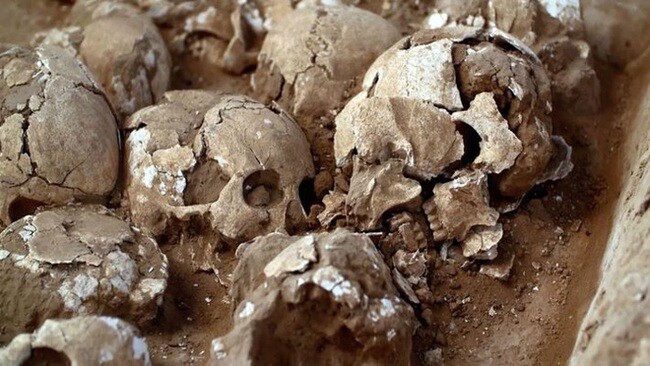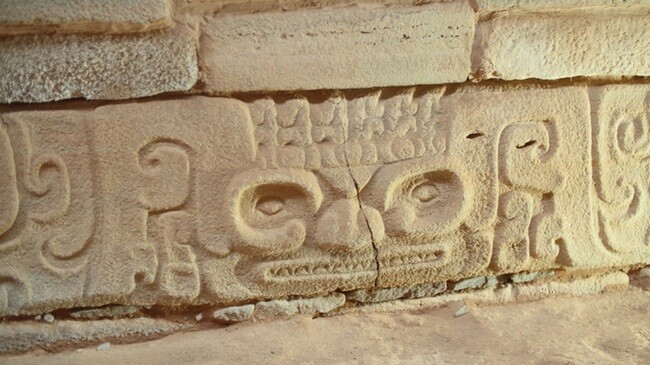“The ancient site is covered with dust, rocks, time and silence. However, after 4,300 years, one of the world’s oldest cities is no longer lost to history, no longer abandoned. Its stones have revealed countless precious secrets, challenging our understanding of the early stages of Chinese civilization. More revelations are sure to be revealed soon.. .” – National Geographic.
For decades, villagers in the dust-covered hills of China’s Loess Plateau believed that the crumbling stone walls near their homes were part of the Great Wall. Remnants of an ancient fence zigzag through this arid region inside the northern bypass of the Yellow River, marking the border of China’s dominance for more than 2,000 years.
Discover the century
However, when a team of Chinese archaeologists arrived to investigate the origin of the ruins, they began to unearth something magical and puzzling. These ancient rocks are not part of the Great Wall of China but the ruins of a magnificent city. They named it Shimao. “Shimao is one of the most important archaeological discoveries of the 21st century,” said Sun Zhouyong, director of the Shaanxi Provincial Institute of Archeology and the leader of the excavation at Shimao.
Even more amazing find: After carbon dating at Shimao, archaeologists determined it to be 4,300 years old. This means that Shimao is 2,000 years older than the oldest part of the Great Wall, and existed 500 years before Chinese civilization emerged in the Central Plains (hundreds of kilometers south of the Great Wall).

“Shimao is one of the most important archaeological discoveries of this 21st century” – Sun Zhouyong. Source: Internet
Shimao flourished in this remote area for nearly half a millennium, from about 2300 BC to 1800 BC. It was once a city designed to face constant danger/conflict – A frontier land ruled for thousands of years by war between northern nomadic herders and farmers in the central plain.
To protect themselves from violent opponents, the Shimao elite shaped their elongated 20-story pyramid atop the highest of the city’s hills. The pyramid is visible from every point of the city, about half the height of the Great Pyramid of Giza in Egypt, built around the same time (2250 BC). But its secret chamber is four times larger than Giza’s.
Shimao’s fortifications are amazing not only in size but also in the ingenuity of their creators.
BUT, later Shimao was abandoned suddenly and mysteriously. None of the ancient texts that help guide Chinese archeology mention an ancient city to the north.
Revealing the creepy secret
However, the deeper they explore, the more Chinese archaeologists uncover really scary secrets of the past.
Continuing to excavate, they discovered a nearly 10 km long wall guarding around a 700 meter high pyramid and a secret room containing ancient artifacts, jade, 70 beautiful relief sculptures in stone. and gruesome evidence contains the history of later Bronze Age humans in China.
The most macabre discovery lies beneath the eastern wall of the pyramid: 80 human skulls crammed into six pits – and no human skeleton is complete. (The two pits near the East Gate contain exactly 24 skulls in each.)

The 700 meter high pyramid at Shimao. Source: LI MIN / UCLA

Skulls reveal terrifying secrets. Source: NATIONAL GEOGRAPHIC
The number and location of the skulls suggest to archaeologists a sacrificial beheading ceremony – possibly the earliest demonstration of human sacrifice in Chinese history. Forensic scientists identified most of the victims as young girls, most likely prisoners from a rival group.
Li Min, an archaeologist at the University of California, Los Angeles, USA, who has visited and written extensively about Shimao, said: “The scale as well as the macabre nature of the Shimao ritual is unprecedented in China. Early Kingdom.”
The skull bones are a sign that the East Gate marks the entrance to another world. Anyone who walks across the threshold — above the burial pits — will see the stone blocks on the walls carved in a diamond pattern, making them look like giant eyes watching. down the East Gate. Wedging the stone walls are thousands of pieces of dark green and black jade, shimmering jewels that both ward off evil and represent the power and wealth of the Shimao elite.
Besides the jade, the archaeologists also found the remains of crocodile skin, which must have come from a marshland much further south. Crocodile skin drums may have been used in ceremonies, an indication of the important role music played in Shimao palace life.
Clue
Only a small part of Shimao has been excavated so far, so discoveries continue to be made in the near future. Along with rock carvings discovered in 2019, archaeologists have found evidence of busts and human statues once placed on the walls around the East Gate.
Archaeologist Li Min said: “We are only just beginning to understand what the carvings might represent, but the images that represent the human geometry are ‘a very creative and rare endeavor’.

Recently excavated rock carvings “may have endowed the pyramid of Shimao with special religious strength,” the archaeologists say. Source: BEN SHERLOCK / NATIONAL GEOGRAPHIC
There is so much about Shimao that remains shrouded in mystery, including its name. Archaeologists are still trying to understand how Shimao’s economy worked, how the city interacted with other prehistoric cultures, and whether Shimao’s elites possessed a writing system or not. are not. “That should solve an age-old mystery if we uncover it.”
However, there are some clues as to why Shimao was abandoned after 500 years. It was not an earthquake, flood or plague. A war may have helped push them back, but scientists see more evidence that climate change plays an important role.
In the third millennium BC, when Shimao was founded, the relatively warm and humid climate attracted increasing numbers of ancients to the Loess Plateau. Historical records show a rapid transition from 2000 to 1700 BC to a drier and cooler climate. The lake dries up, the forest disappears, the desert is encroached on, and the people of Shimao migrate to unknown places…
Shimao is currently the largest known Neolithic settlement in China – its 1,000-acre site is about 25% larger than New York City’s Central Park (USA) – with an artistic foundation. ancient arts and civilizations, which influenced later Chinese dynasties.
Along with recent discoveries at other prehistoric sites nearby and along the coast, Shimao is forcing historians to rethink the beginnings of Chinese civilization — broadening their understanding. about the geographical locations and external influences of its earliest cultures.
“Shimao is one of the most important archaeological discoveries of the 21st century. It provides us with a new perspective on the development of early Chinese civilization,” Archaeologist Sun Zhouyong said specifically.
Source: kenhthoisu








